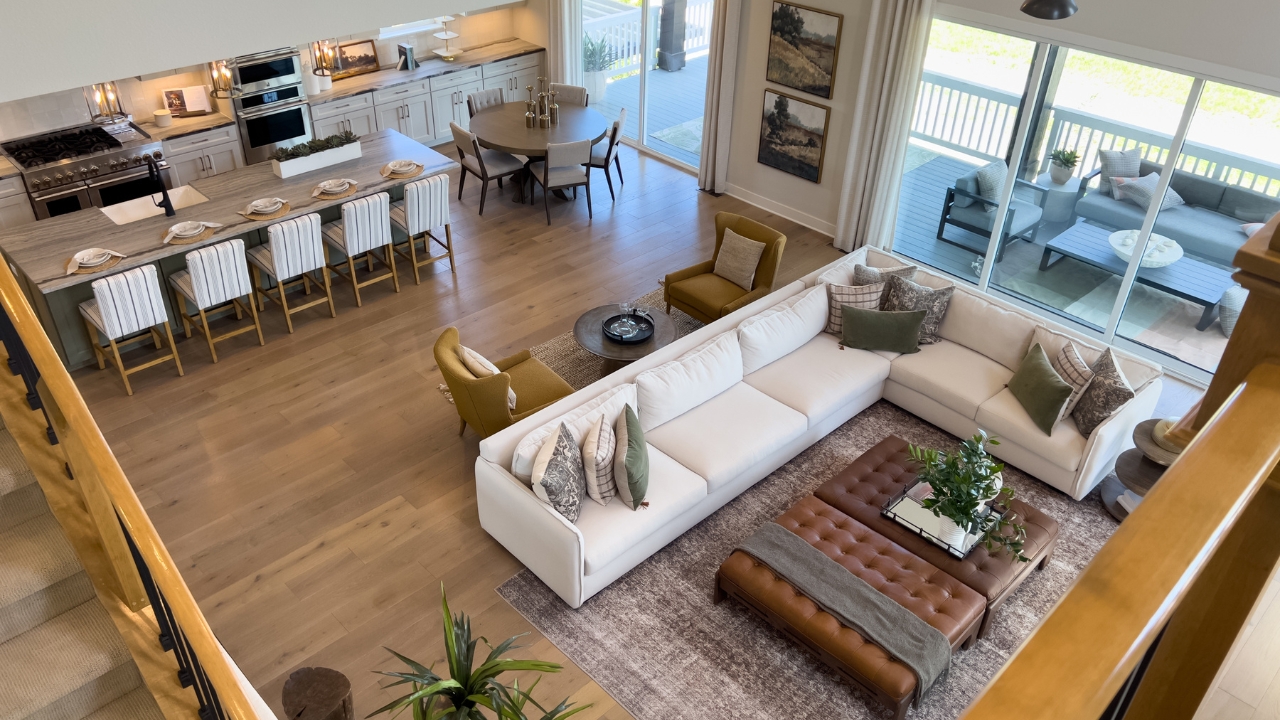Why the ultra-rich are ditching open concept homes
For years, open-concept living was the dream — wide, connected spaces where kitchens, dining rooms, and living areas flowed together. It felt modern and airy, like something straight out of a design magazine.
But lately, the ultra-wealthy are moving in a different direction. You’ll find fewer wall-to-wall layouts and more homes designed around privacy, purpose, and quiet separation. The open concept isn’t gone entirely, but it’s definitely losing its grip on luxury.
Privacy is the new luxury
When you live in a house where everyone and everything shares the same air, you start to crave separation. Wealthy homeowners, especially those with families or live-in staff, want more privacy again. Closed-off spaces let people work, rest, or unwind without the constant hum of other activity in the background. Whether it’s a private office, a second den, or a reading nook behind French doors, walls give people room to breathe — and that’s becoming the new status symbol.
Noise control matters more than ever
An open floor plan might look nice in photos, but anyone who’s lived with one knows the downside — noise travels. Conversations, kitchen clatter, and TVs all compete in the same space. The ultra-rich don’t want that kind of chaos. They want homes that feel peaceful, not like a restaurant at dinner rush. Architects are adding more partitions, pocket doors, and designated zones so the main living spaces stay calm and functional, no matter how many people are home.
Entertaining looks different now

A decade ago, open layouts were all about hosting — everyone gathering in one big space to cook, eat, and socialize. But the pandemic shifted how people entertain. Smaller, more intimate gatherings became the norm, and that trend stuck. Wealthy homeowners are leaning into that by creating cozy dining rooms, cocktail lounges, and sitting areas that feel intentional instead of exposed. They still host, but now it’s in spaces that create atmosphere instead of echo.
Functionality beats aesthetic
Luxury homes are built to serve the people living in them, not to impress visitors. An open concept might look appealing on paper, but it doesn’t always work in daily life. Cooking smells linger, dishes stay visible, and there’s no easy way to hide a mess when guests arrive. The ultra-rich want their homes to function smoothly. That means kitchens that can close off, butler’s pantries to contain the prep work, and defined areas for relaxation, work, and play.
Zoning feels more organized
Designers are moving toward what they call “zoned living” — spaces with clear purposes that still flow naturally together. Instead of one large living area, you’ll see subtle separations that create distinction without feeling closed off. Glass partitions, archways, and built-in shelving can divide spaces while keeping sightlines open. This approach gives structure without sacrificing light or movement, creating homes that feel both expansive and grounded.
Walls make decorating easier

Open layouts are tricky when it comes to design. Every wall color, furniture choice, and decor decision has to match perfectly because there are no natural breaks. When you add walls back in, you gain freedom. Each room can have its own personality while still tying into the overall aesthetic. That flexibility is something high-end designers love — and it’s part of why luxury homes now feel more layered and lived-in instead of showroom-perfect.
Comfort has replaced minimalism
For a while, the open concept was tied to minimalism — fewer walls, fewer objects, fewer distractions. But the pendulum has swung toward comfort. People want rooms that feel warm, personal, and designed for living. Plush furniture, layered textures, and architectural details make more sense when you have defined rooms. The ultra-rich aren’t chasing empty spaces anymore — they’re investing in homes that feel cozy and functional year-round.
The open concept had its moment, and it changed how people think about flow and light. But in luxury design today, comfort, privacy, and functionality matter more. The ultra-rich aren’t closing themselves off — they’re choosing homes that serve their lives instead of showcasing them.
Like Fix It Homestead’s content? Be sure to follow us.
- I made Joanna Gaines’s Friendsgiving casserole and here is what I would keep
- Pump Shotguns That Jam the Moment You Actually Need Them
- The First 5 Things Guests Notice About Your Living Room at Christmas
- What Caliber Works Best for Groundhogs, Armadillos, and Other Digging Pests?
- Rifles worth keeping by the back door on any rural property
*This article was developed with AI-powered tools and has been carefully reviewed by our editors.







